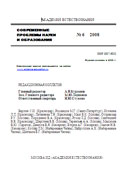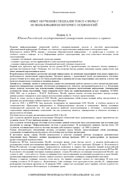PDF-версия статьи


|
Information processes have global nature, but they have national specifics of that state in which they happen. In Kazakhstan with finding of sovereignty the new system of mass media was created. Emergence of new media of the organizations, private, joint-stock media, broadcasting companies gave the chance quicker and easier to enter into media the market which constantly feels the need for information resources, for broadcasting exchange.
Now in the country the market of mobile telephony develops actively. The ministry of transport and communication of the Republic of Kazakhstan carries out active work on implementation of the standard of cellular communication 4G in the territory of the republic.
Consider generation networks: 1G - Analog Cellular Communications. These include standards with analog voice transmission. Data transmission is not possible. These networks are still used in some countries. 2G - Digital cellular communications. Network, in which voice is transmitted in the digital form. Also, it is possible to transmit digital data.
3G - Broadband digital cellular communications, switched multi-purpose computer networks, including the Internet. The name speaks for itself. Destination - the transmission of digital data at a higher speed. Further, some of the standards and technology in more detail.
Currently it implemented the state program "e-government", which was approved by Presidential Decree 10 November 2004. Its purpose - construction of corporate information systems across the country. It takes place in two stages: first - the information, the second - interactive. Launched a web portal of "electronic government", which as a single window brings together all the Internet resources of state bodies.
For the introduction of digital broadcasting - is a top priority for Kazakhstan - global trends the country´s transition to digital broadcasting by 2015, which is due. Kazakhstan has developed the State program for the development of digital broadcasting in the Republic of Kazakhstan for 2008-2015.
GSM (Groupe Special Mobile, later renamed the Global System for Mobile Communications). Fully digital standard. It belongs to the second generation networks. Since 1991 GSM standard started to actively implement in many countries around the world. Modifications can be divided into stages of development: GSM Phase 1, GSM Phase 2, GSM Phase 2+. In each new modification of the standard capabilities very significantly expanded. In the GSM defined operating range 4: GSM 900, GSM 1800 used in Europe and Asia. According to the GSM Association (GSMA) on these networks account for about 82% of the global mobile market.
The information technology revolution has intensified the implementation and development of global QMS, is spreading rapidly in the country satellite, cable TV, mobile telephones, the Web-growing number of publications, multimedia information resources being developed fiber-optic communications, paid video. Socio-economic changes in the Kazakhstan society have determined the direction of development of new information technologies, media development in the country.
Creation of information services market, the emergence of networks of different operators, communication firms in Kazakhstan, the new TV and radio channels - these are the factors that affect the prospects of the current media development in the country. The modernization of a number of countries and regions can be successful while maintaining their community identity in terms of communication and economic globalization with the active development of new information technologies and new media communication.
References
1. A. Jalilov Experts say about a revolution in the field of mass communication // Panorama 2010, 1 October-C 3.
2. State Program of Development of digital broadcasting in the Republic of Kazakhstan for 2008-2015.
ОПУБЛИКОВАНО
S.S.Mombekova., G.T.Zhusupbekova., G.T.Koshtaeva., N.J.Rahymbek., G.S.Shaymerdenova STANDARTS OF MOBILE TECHNOLOGIES. // Современные проблемы науки и образования - 2017.-№6. (приложение "Педагогические науки"). - C. 12